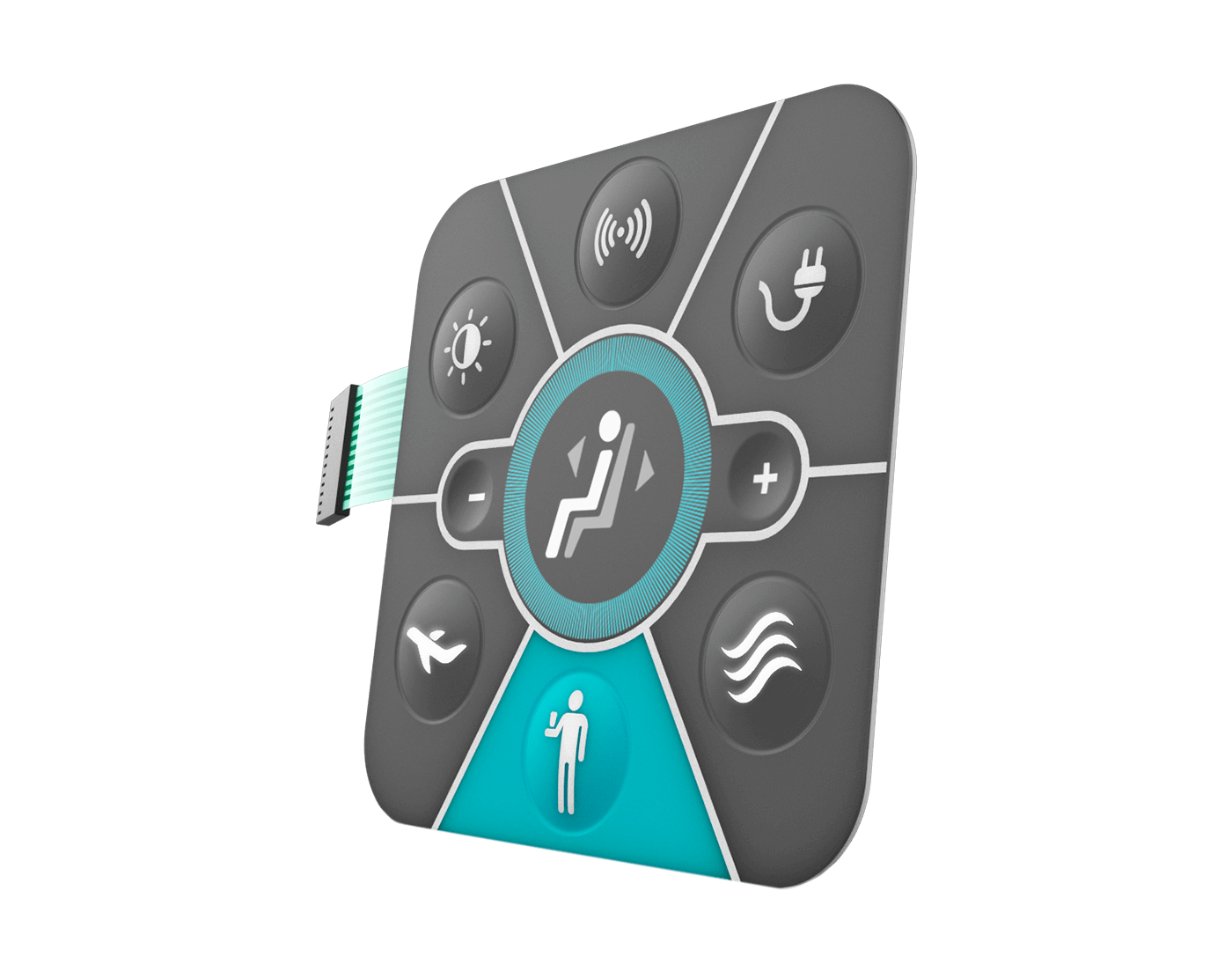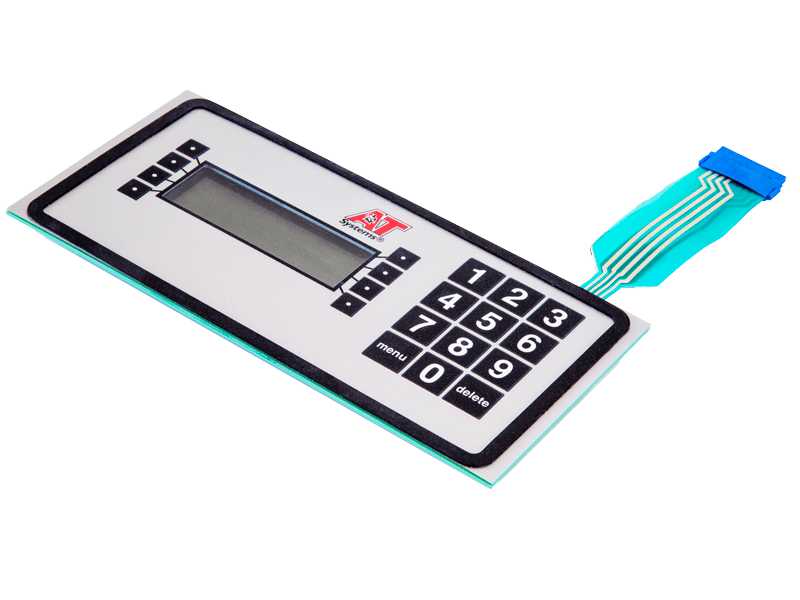Membrane Switch Manufacturer with Quick Prototyping and Lead Time
Membrane Switch Manufacturer with Quick Prototyping and Lead Time
Blog Article
Recognizing the Significance of Membrane Switch in Modern Electronics and Their Applications
Membrane changes function as an important component in modern electronics, providing an efficient user interface for user interaction. Their customizable and light-weight nature makes them appropriate for a range of applications across diverse industries. Understanding their essential components and benefits can give insights right into their growing significance. As innovation remains to development, the development of Membrane changes raises inquiries regarding their future applications and style innovations. What exists in advance in this vibrant field?

What Are Membrane Buttons?
Membrane buttons are necessary parts in contemporary electronics, offering as interface that help with interaction in between tools and individuals. These buttons include a number of layers, including a graphic overlay, a sticky layer, and a circuit layer, all of which interact to develop a durable and practical interface. The style enables a level, inconspicuous solution that can be tailored regarding size, form, and aesthetic look, making them ideal for different applications, from customer electronic devices to medical gadgets. The tactile comments supplied by Membrane changes enhances individual experience, while their resistance to dirt and moisture makes them excellent for challenging settings. In addition, Membrane switches can incorporate functions such as backlighting and printed graphics, further broadening their functionality. Their versatility and toughness make them a recommended selection in sectors where reliability and simplicity of usage are paramount, ultimately adding to the seamless procedure of modern-day electronic gadgets.
Trick Elements of Membrane Changes
While various components add to the capability of a membrane switch, three key layers play significant functions in its style and procedure. The leading layer, typically made from a long lasting polymer, serves as the interface for customer communication, often including published graphics and symbols. Below this is the spacer layer, which keeps the needed range in between the leading layer and the circuit layer. This spacer layer guarantees that the button activates just when pushed, protecting against unintended inputs. The circuit layer contains conductive traces that finish the electrical circuit when the leading layer is depressed. These traces can be made from numerous materials, including copper or silver. With each other, these elements create a durable and dependable tool that is compact and versatile, appropriate for a wide variety of digital applications, from house home appliances to medical tools. Understanding these essential components is important for appreciating the overall capability of Membrane buttons.
Advantages of Utilizing Membrane Switches Over

Membrane Switch Manufacturing Process
Understanding the Membrane switch manufacturing procedure reveals the elaborate actions associated with creating these essential parts. The process normally begins with the layout stage, where layouts and specs are developed utilizing specialized software. Following this, the visuals overlay is printed on a versatile substrate, often utilizing high-resolution printing techniques to assure clarity and precision.Next, the sticky layers are used, which serve to bond the different elements with each other. The circuit layers, made from conductive inks or materials, are after that published onto a separate substrate. These layers are carefully lined up and laminated to produce a functional switch.After assembly, the buttons undertake evaluating to confirm capability and sturdiness. Quality assurance steps are carried out throughout the procedure to identify and rectify any problems. click this site Ultimately, the finished Membrane buttons are packaged and prepared for distribution, prepared to fulfill the needs of modern electronic applications.
Applications of Membrane Switches in Different Industries
Membrane switches are increasingly used across different markets, especially in clinical devices and customer electronic devices. In the clinical area, they supply reliable control user interfaces for tools that call for precise operation. In consumer electronic devices, these buttons improve individual interaction by offering smooth and responsive user interfaces.
Medical Tools Control
Many contemporary medical tools make use of Membrane buttons for structured procedure and improved individual interaction. These buttons supply a trusted, long lasting user interface for a variety of applications, consisting of diagnostic devices, person surveillance systems, and medical instruments. Their customizable styles allow for certain formats that can suit the unique demands of health care specialists, making certain user-friendly navigation and reliable access to vital functions. Furthermore, Membrane buttons are immune to pollutants, making them suitable for clean and sterile environments. The responsive feedback they supply can boost individual self-confidence, reducing the threat of errors throughout important clinical procedures. Generally, the integration of Membrane buttons in medical tools significantly adds to improved functional efficiency and individual security in healthcare settings.
Customer Electronics Interfaces
In the domain name of customer electronics, Membrane buttons play a vital role in improving interface across a vast array of gadgets. These buttons are integral to products such as remotes, microwaves, and gaming consoles, supplying a reliable and user-friendly user interface. Their design allows for a seamless combination of graphics and capability, allowing suppliers to create sleek, modern looks without endangering functionality. Membrane buttons are additionally recognized for their resilience, commonly holding up against extensive use and exposure to various ecological problems. Furthermore, they can integrate functions like backlighting and responsive comments, additional enhancing the individual experience. As consumer demands for advanced yet user-friendly interfaces grow, Membrane switches remain to be an essential component ahead of time digital tool performance.
Style Considerations for Membrane Switches
Creating reliable Membrane switches requires mindful focus to different variables that affect both functionality and customer experience. One vital factor to consider is the option of products, as they can affect durability, responsive responses, and visual charm. Choosing a suitable adhesive is essential for assuring long-lasting adhesion and resistance to ecological factors.In enhancement, the layout and layout of the switch must suit individual interaction, with switch sizes and spacing optimized for convenience of use. The incorporation of graphics and labeling need to prioritize quality and exposure under various lights conditions.Consideration of electrical features, such as actuation pressure and switch level of sensitivity, will improve the responsiveness of the Membrane button. The layout should suit manufacturing procedures to guarantee cost-effectiveness and prompt production. Generally, a well-thought-out style boosts both the performance and the customer experience of Membrane switches in contemporary electronic devices.

Future Trends in Membrane Switch Modern Technology
As modern technology continues to progress, Membrane buttons are poised to integrate new innovations that will improve their capability and application in numerous fields. One substantial fad is the incorporation of flexible and long lasting materials, which will enhance the life expectancy and dependability of these buttons. Boosted surface area textures and customizable graphics are additionally anticipated, enabling more intuitive user interfaces.Moreover, the integration of clever technology, such as touch-sensitive surface areas and haptic responses, is anticipated to boost customer communication, making Membrane switches over wikipedia reference extra engaging and responsive. Additionally, advancements in published electronic devices will certainly make it possible for extra intricate wiring within thinner accounts, better broadening design possibilities.Sustainability will additionally play an essential duty in future advancements, as makers check out environment-friendly materials and production procedures. Generally, these trends will certainly ensure that Membrane switches over continue to be essential and pertinent in an interconnected and increasingly electronic world.
Frequently Asked Inquiries
Exactly How Do Membrane Switches Compare to Standard Mechanical Switches?
Membrane changes deal advantages over traditional mechanical buttons, including lowered dimension, lighter weight, and enhanced sturdiness. They generally provide a sealed surface area, improving resistance to dirt and moisture, making them ideal for varied applications.
What Materials Are Commonly Made Use Of in Membrane Switch Construction?

Can Membrane Switches Over Withstand Extreme Environmental Conditions?
Membrane buttons can stand up to extreme environmental problems, relying on their layout and materials. Premium constructions commonly include resilience versus temperature changes, humidity, and direct exposure to chemicals, making them appropriate for different demanding applications throughout markets.
Just How Long Do Membrane Changes Commonly Last Before Failing?
Membrane switches typically display a lifespan ranging from 1 to 10 million actuations, relying on factors such as usage regularity, ecological conditions, and producing high quality. Regular upkeep can extend their durability and operational dependability substantially.
Are Membrane Switches Personalized for Particular Applications?
Membrane switches are without a doubt adjustable for certain applications. They can be tailored in style, capability, and size, permitting manufacturers to meet distinct user demands and improve product looks while preserving operational effectiveness and sturdiness. Membrane switches are vital elements in contemporary electronics, serving as user interfaces that facilitate interaction between individuals and tools. The tactile feedback provided by Membrane switches over improves individual visit the site experience, while their resistance to dust and dampness makes them perfect for testing atmospheres. The unification of graphics and labeling ought to prioritize clearness and presence under numerous illumination conditions.Consideration of electrical characteristics, such as actuation pressure and switch sensitivity, will certainly improve the responsiveness of the Membrane button. Improved surface appearances and personalized graphics are also anticipated, permitting for more intuitive individual interfaces.Moreover, the integration of clever modern technology, such as touch-sensitive surfaces and haptic responses, is anticipated to improve customer interaction, making Membrane changes more interesting and responsive. Membrane switches deal advantages over conventional mechanical switches, consisting of decreased dimension, lighter weight, and enhanced durability.
Report this page